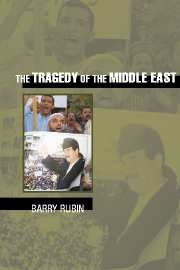Book contents
- Frontmatter
- Contents
- Preface
- 1 The Triumph of the “Old Middle East”
- 2 Paradigm Lost
- 3 The Regime's Success, the Nation's Disaster
- 4 Syria: The Test Case for Reform
- 5 Iran: The People versus the Will of God?
- 6 Force and Violence in Middle Eastern Politics
- 7 The Battle for the Soul of Islam
- 8 The Arab-Israeli Conflict: Foundation Stone or Millstone?
- 9 The Truth about U.S. Middle Eastern Policy
- 10 The Uncivil Society and the Wall of Lies
- Index
5 - Iran: The People versus the Will of God?
Published online by Cambridge University Press: 05 August 2012
- Frontmatter
- Contents
- Preface
- 1 The Triumph of the “Old Middle East”
- 2 Paradigm Lost
- 3 The Regime's Success, the Nation's Disaster
- 4 Syria: The Test Case for Reform
- 5 Iran: The People versus the Will of God?
- 6 Force and Violence in Middle Eastern Politics
- 7 The Battle for the Soul of Islam
- 8 The Arab-Israeli Conflict: Foundation Stone or Millstone?
- 9 The Truth about U.S. Middle Eastern Policy
- 10 The Uncivil Society and the Wall of Lies
- Index
Summary
Iran's Islamic revolution was an earthquake that shook the Middle East and seemed permanently to reshape Iran itself. Yet 20 years after its apparent total victory, the revolution's failures sparked a protest movement that captured some of the nation's institutions and won support from most of its people. Still, Iran did not become an example of a successful transition to democracy and moderation, but just another case of a dictatorial system, like those in the Arab world, that was very good at keeping power but not at much else. The most remarkable thing about postrevolutionary Iran was the dramatic rise of popular democratic expression coupled with its total ineffectiveness in altering the country's system and structure.
In many ways, Iran followed the pattern of the Arab world. The regime used the same basic techniques employed by its counterparts there. For Iran, as for the Arab states, the 1990s did not bring reform or a functioning democracy, even if, in contrast to Arab states, the masses were openly on the side of change. Modernization was blocked, radical foreign policies (though more cautious in deed than in rhetoric) prevailed, and dictatorship survived. Yet there were also significant differences. In Iran, the system faced far more serious challenges. Power was divided, and democratic forces were far stronger. Still, despite the partial change and hope visible in Iran, it too has been stuck in the process of shifting paradigms. The government accepted the result of relatively free elections, but then blocked them from having any real effect.
Why was Iran different from the Arab world? It is impossible to understand all of the historical, cultural, and other factors.
- Type
- Chapter
- Information
- The Tragedy of the Middle East , pp. 117 - 137Publisher: Cambridge University PressPrint publication year: 2002



